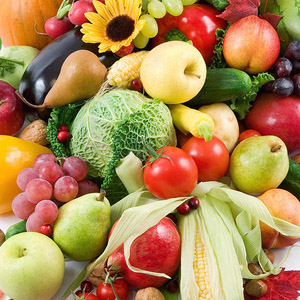
Note
- The upper and lower limit of range doesn’t indicate a clear boundary. Then you should operate flexibly.
- You should consider the quality of lipid and carbohydrate. It means that it’s required to consider for the composition of fatty acids and saccharides, i.e. saturated fatty acid and dietary fiber.
- If you attempt to prevent the onset and the aggravation of disease, you should know the actual condition of the nutrient balance and determine the appropriate component ratio.
| Target Amount (Median) | ||||
|---|---|---|---|---|
| Age | Protein | Lipid | Carbohydrate | |
| Lipid | Saturated Fatty Acid | |||
| 0-11 M | ||||
| 1-17 | 13-20 (16.5) | 20-30 (25) | 50-65 (57.5) | |
| 18-69 | 13-20 (16.5) | 20-30 (25) | ≤ 7 | 50-65 (57.5) |
| 70- | 13-20 (16.5) | 20-30 (25) | ≤ 7 | 50-65 (57.5) |
Energy production nutrient balance isn’t described in 2010 edition. It’s described in the chapter of carbohydrate as following;
It may be appropriate to set target amount (upper and lower limit) that the appropriate intake of carbohydrate is determined as the difference between the estimated energy requirements and energy derived from enough protein and appropriate lipid.
The purpose of 2015 edition is avoiding of deficiency of various nutrients and prevention of onset and aggravation of lifestyle disease. 2015 edition has formulated the energy production nutrient balance as the ratio (% energy) of protein, lipid and carbohydrate in the total energy intake.
Energy Conversion Factor
The energy conversion factors of protein, lipid and carbohydrate are 4 kcal/g, 9 kcal/g and 4 kcal/g, respectively. The energy conversion factor of alcohol is 7 kcal/g.
Protein
The energy production nutrient balance ranges between 13-20 % energy. 13 % energy is equal to the recommended amount of protein and 20 % energy is equal to 2.0 g/kg/d. For elderly, pregnant and lactation, you should be careful not to approach to lower limit of the target amount. Even when energy intake is low, enough protein is required.
Lipid
The energy production nutrient balance of lipid is 20-30 % energy. 20 % energy is equal to approximate amount of essential fatty acid and 30 % energy is set according to the target amount of saturated fatty acid. The target amount of saturated fatty acid is set to less than 7 % energy from the point of view of prevention of onset and aggravation of myocardial infarction. Although the target amount of SFA for child is not set since they couldn’t obtain evidence, it may be better to care of overdose. And you should be care of the quality of essential fatty acid, i.e. n-3 fatty acid and n-6 fatty acid.
Carbohydrate
Alcohol is included in carbohydrate. Carbohydrate has been set as the residual of protein and lipid. When protein and lipid approach to lower limit, carbohydrate approaches to 67 % energy, it is not appropriate that the diet with rich carbohydrate may be highly purified cereals, sweeteners and alcohol. Then they have set the upper limit of the target amount of carbohydrate as 65 % energy. On the other hand, when protein and lipid approach to upper limit, the lower limit of the target amount of carbohydrate approaches to 50 % energy and you should be care of the deficiency of dietary fiber.
References: br>
The Dietary reference Intakes for Japanese (2015 edition) Energy Production Nutrient Balance (pdf) br>
The Dietary reference Intakes for Japanese (2010 edition) Carbohydrate (pdf)

